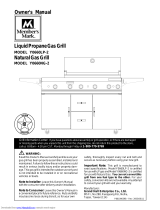5
Operating Instructions
1Safety
The safety aspects of this appliance comply with ac-
cepted technical standards and the German Appli-
ance Safety Law. However, as manufacturers we
also believe it is our responsibility to familiarise you
with the following safety instructions.
Electrical Safety
•The installation and connection of the new appli-
ance must only be carried out by qualified person-
nel.
•Repairs to the appliance are only to be carried out
by approved service engineers. Repairs carried out
by inexperienced persons may cause injury or seri-
ous malfunctioning. If your appliance needs repair-
ing, please contact your local customer center or
your dealer.
3Please follow these instructions, otherwise the
warranty will not cover any damage that may
occur.
•Flush-mounted appliances may only be operated
following installation in suitable installation cabi-
nets and workplaces which conform to the relevant
standards. This ensures sufficient protection
against contact for electrical units as required by
the VDE [Association of German Electrical Engi-
neers].
•If your appliance malfunctions or if fractures,
cracks or splits appear:
–switch off all cooking zones,
–disconnect the hob from the electricity supply.
Child Safety
The cooking zones will become hot when you cook.
Therefore, always keep small children away from the
appliance.
The appliance is not intended for use by young chil-
dren or infirm persons without supervision.
Young children should be supervised to ensure that
they do not play with the appliance.
Safety During Use
•This appliance may only be used for normal cook-
ing and frying in the home. It is not designed for
commercial or industrial purposes.
•Do not use the hob to heat the room.
•Take care when plugging electric appliances into
mains sockets near the hob. Connection leads
must not come into contact with the hot surface.
•Overheated fats and oils catch fire quickly. You
should supervise cooking when preparing foods in
fat or oil (e.g. chips).
•Switch off the cooking zones after use.
Safety When Cleaning
•For safety reasons do not clean the appliance with
a steam jet or high pressure cleaner.
•Clean the hob in accordance with the maintenance
and cleaning instructions in this manual.
To Avoid Damaging Your Appliance
•Do not use the hob as a work surface or for stor-
age.
•Do not operate the cooking zones when there is no
pan or the pans are empty.
•Ceramic glass is insensitive to temperature shock
and very robust; however it is not unbreakable. Es-
pecially sharp and hard objects that fall on the
cooking surface can damage it.
•Do not use cast iron pans or pans with a rough,
burred or damaged base. Scratching may occur if
the pans are slid across the surface.
•Do not place any pans on the hob frame. Scratch-
ing and damage to the paint may occur.
•Make sure that no acidic liquids, e.g. vinegar, lem-
on or descaling agents, are spilt onto the hob
frame, since these cause dull spots.
•If sugar or a preparation with sugar comes into
contact with the hot cooking zone and melts there
it must be cleaned off immediately with a scraper
while it is still hot. If it cools, the surface may be
damaged when it is removed.
•Keep all items and materials that can melt away
from the ceramic glass surface, e.g. plastics, alu-
minium foil, or oven foils. If something of this na-
ture should melt onto the ceramic glass surface, it
must also be removed immediately using the
scraper.
•·It is recommended that pans with aluminium or
copper bases NOT be used as metallic discolour-
ing and pitting may occur on the glass ceramic
surface.




















